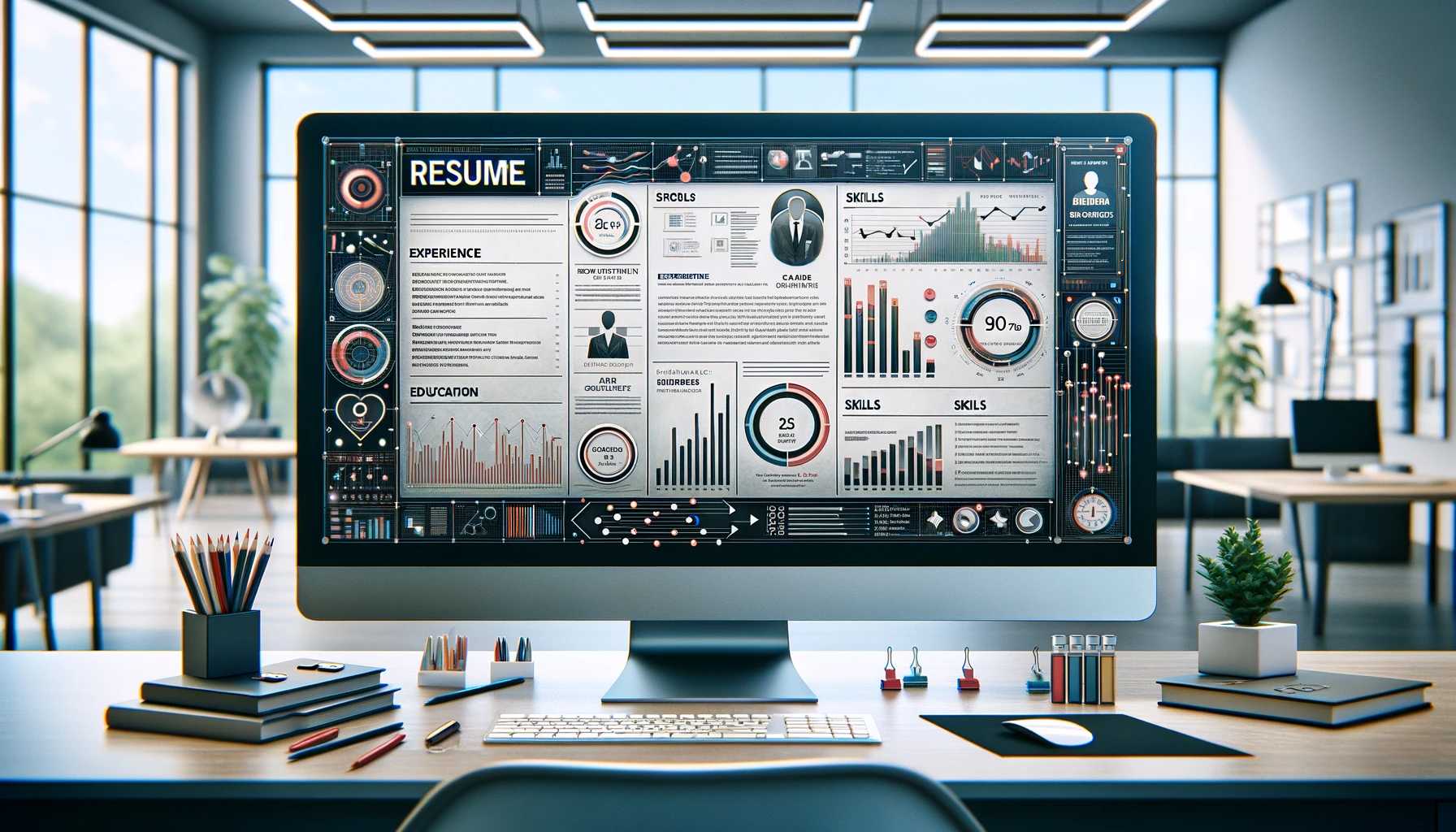Your Resume: The Power of Visual Elements and Infographics
In today's digital age, the traditional resume format is evolving. As job seekers strive to stand out in a crowded job market, many are turning to visual elements and infographics to modernize their resumes and capture the attention of hiring managers. Gone are the days of plain text documents – now, creative design, color, and visual storytelling are taking center stage. So, let's explore how embracing visual elements and infographics can transform your resume and help you land your dream job.
The Rise of Visual Resumes:
1. Capturing Attention: In a sea of black-and-white resumes, visual elements immediately catch the eye and make a lasting impression. Creative design elements, such as icons, graphs, and color schemes, can help your resume stand out from the crowd and grab the attention of busy recruiters and hiring managers.
2. Showcasing Creativity: Incorporating visual elements into your resume allows you to showcase your creativity and design skills. It's an opportunity to demonstrate your ability to think outside the box and present information in an engaging and visually appealing way – qualities that are highly valued in many industries.
3. Highlighting Key Information: Visual elements can help to organize and highlight key information on your resume, making it easier for recruiters to quickly grasp your qualifications and accomplishments. Infographics, in particular, are effective for presenting data, statistics, and achievements in a visually compelling format.
4. Enhancing Readability: Visual resumes are often more visually engaging and easier to read than traditional text-based resumes. By breaking up large blocks of text and incorporating visual cues, such as icons and bullet points, you can improve readability and make it easier for recruiters to scan your resume for relevant information.
5. Reflecting Modern Trends: As technology continues to evolve, so too do the expectations for job applications. Employers are increasingly looking for candidates who are tech-savvy and up-to-date with modern trends. A visually appealing resume demonstrates your willingness to embrace new technologies and adapt to changing industry norms.
Tips for Creating a Visual Resume:
Now that we've discussed the benefits of visual resumes, let's explore some tips for creating one that effectively showcases your skills and experiences:
1. Choose the Right Format: Decide whether you want to create a traditional paper resume with visual elements or a digital resume that can be easily shared online. Digital resumes offer more flexibility for incorporating interactive elements, such as hyperlinks and multimedia content.
2. Keep it Professional: While visual resumes offer opportunities for creativity, it's important to maintain a professional appearance. Choose a clean and modern design that complements your industry and avoid excessive use of flashy graphics or distracting animations.
3. Focus on Readability: Ensure that your resume is easy to read and navigate. Use clear headings, consistent formatting, and ample white space to guide the reader's eye and help them find the information they need quickly and easily.
4. Tailor to Your Audience: Consider the preferences of your target audience when designing your visual resume. Tailor the design, tone, and content to align with the expectations of recruiters and hiring managers in your industry.
5. Test for Compatibility: If you're creating a digital resume, test it across different devices and platforms to ensure compatibility. Your resume should be accessible and functional on desktop computers, tablets, and smartphones alike.
Examples of Visual Resume Elements:
To give you some inspiration, here are a few examples of visual elements that you can incorporate into your resume:
1. Infographics: Use infographics to visualize data, statistics, and achievements. This could include charts, graphs, timelines, or process diagrams.
2. Icons and Symbols: Incorporate icons and symbols to represent skills, qualifications, and interests. Choose icons that are relevant to your industry and help to convey information quickly and intuitively.
3. Color Coding: Use color coding to organize information and create visual hierarchy. Choose a color scheme that complements your personal brand and adds visual interest to your resume.
4. Creative Layouts: Experiment with creative layouts and typography to make your resume visually engaging. This could include unconventional placement of text and images or unique design elements that reflect your personality and style.
5. Interactive Elements: If you're creating a digital resume, consider adding interactive elements such as clickable links, embedded videos, or slideshows. This can provide recruiters with a more immersive and interactive experience when viewing your resume online.
Conclusion:
As the job market becomes increasingly competitive, it's essential to find ways to make your resume stand out from the crowd. Embracing visual elements and infographics offers a creative and effective way to modernize your resume and capture the attention of hiring managers. By incorporating visual storytelling, creative design, and innovative formatting, you can showcase your skills, experiences, and qualifications in a visually compelling way that sets you apart from other candidates. So, don't be afraid to think outside the box and experiment with new ways of presenting your professional story – your visual resume could be the key to unlocking your next career opportunity.









